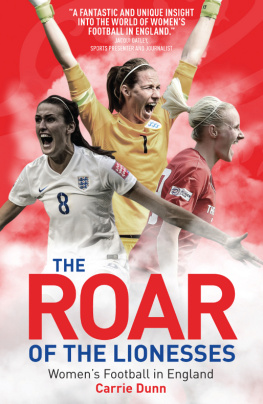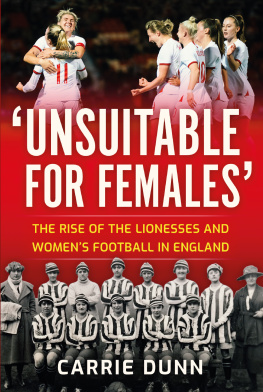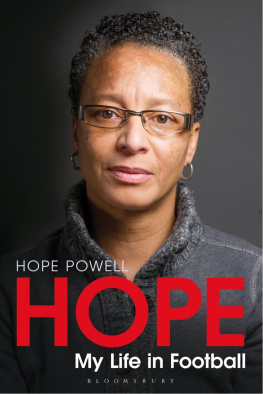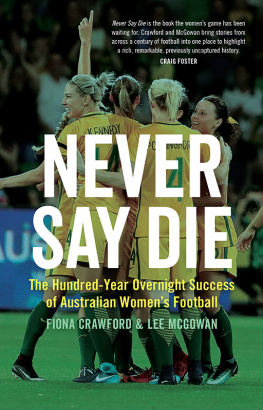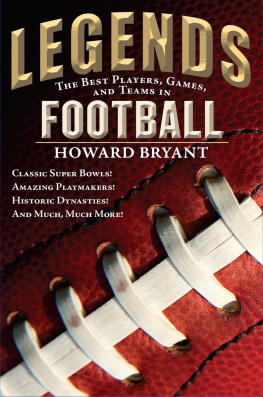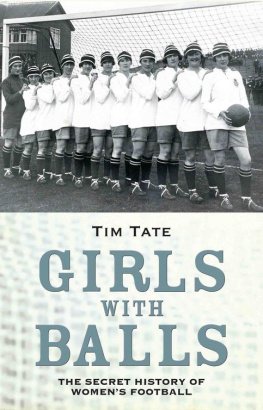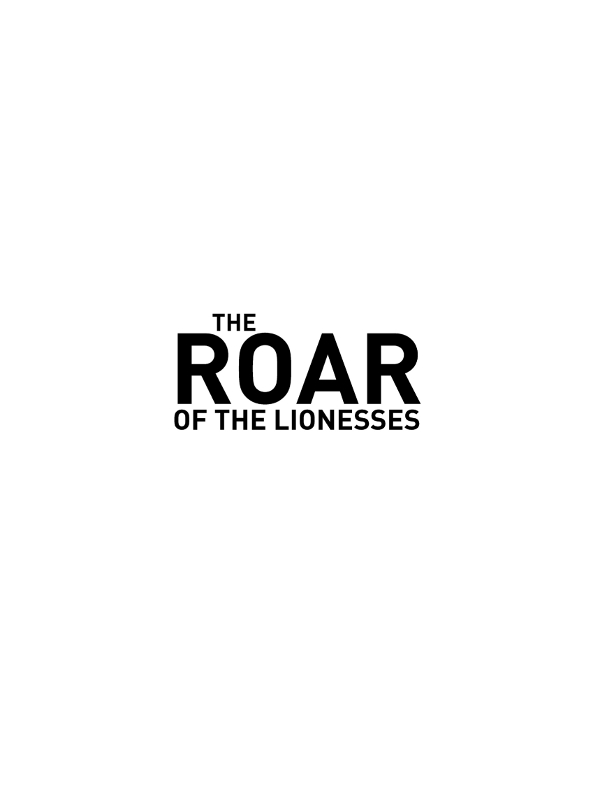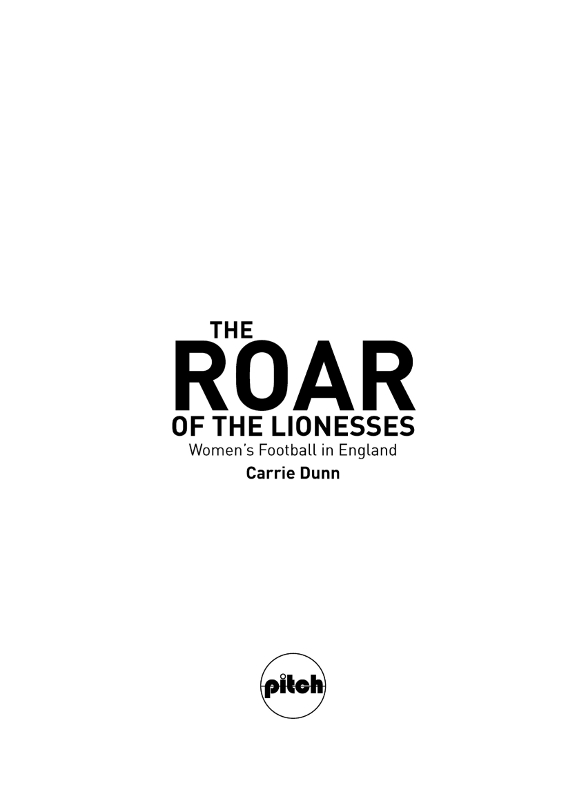First published by Pitch Publishing, 2016
Pitch Publishing
A2 Yeoman Gate
Yeoman Way
Durrington
BN13 3QZ
www.pitchpublishing.co.uk
Carrie Dunn, 2016
All rights reserved under International and Pan-American Copyright Conventions. By payment of the required fees, you have been granted the non-exclusive, non-transferable right to access and read the text of this e-book on-screen. No part of this text may be reproduced, transmitted, downloaded, decompiled, reverse-engineered, or stored in or introduced into any information storage and retrieval system, in any form or by any means, whether electronic or mechanical, now known or hereinafter invented, without the express written permission of the Publisher.
A CIP catalogue record is available for this book from the British Library
Print ISBN 978-1-78531-151-2
eBook ISBN 978-1-78531-239-7
--
Ebook Conversion by www.eBookPartnership.com
Contents
Foreword
by Gillian Coultard
Former England captain and winner of 119 international caps
Twice National League champion, six-time Womens
FA Cup winner with Doncaster Belles
English Football Hall of Fame inductee, 2006
W HEN I began my career, womens football was still amateur. I enjoyed travelling the world a little bit, playing four England internationals a year, if that, and captaining the side, but the players now go further and further afield with their full schedules. Although it was great to see Englands success at the Womens World Cup in Canada, theres still plenty of work to be done both at the top level and at grassroots. The commitment of women throughout the football pyramid is and always has been impressive from Moya Dodd, on the FIFA executive committee, to the players running their own clubs and scrabbling the money together for pitch hire. Their stories deserve to be heard.
Acknowledgements
This book has been a sheer joy to work on.
I owe thanks to very many clubs and people around the UK: Leyton Orient Women (especially Chris Brayford, Olympia Diamond and Danni Griffiths), Doncaster Belles (especially Faye Lygo and Courtney Sweetman-Kirk), Sheffield (especially Richard Tims, Helen Mitchell, Carla Ward, Lisa Giampalma and Jodie Michalska), Manchester City (especially Gavin Makel and the magnificent Sylvia Gore), Millwall Lionesses (especially general manager Hannah Burnett-Kirk and former general manager Charley Mitten), London Bees, Birmingham City Ladies, Cardiff City Ladies (especially Abbie Britton), Tottenham Hotspur Ladies, West Ham Ladies, AFC Unity (especially Jay Baker and Jane Watkinson), Goaldiggers (especially Fleur Cousens) and last but not least Arsenal Ladies (especially Rebecca James one of my former students!).
Thanks also to Crissy Torkildsen of Coventry City Ladies, Matt Cecil at Wycombe Wanderers, Jon Horton, formerly of Reading Women, Carol West and Karen Falconer of the FA Womens Premier League, and Kelly Simmons of the FA.
Thanks to Gary Phillpott of Off The Fence theatre company.
Thanks to all the fans, players and administrators of womens football who shared their views with me, sometimes on condition of anonymity.
Thanks particularly to the legendary Gillian Coultard for agreeing to write the foreword; when I approached her to ask whether she might be prepared to do so, I explained that I thought it was vital for any book about womens football in England today to honour the work done by previous generations of players to get us where we are now. I am thrilled that someone who has made such a huge contribution to womens football has also contributed to this book.
The year in which I wrote this book was also the year my small nephew George went to his first football match (I talk about this in a later chapter). When I was reporting from the Womens World Cup in Canada, I Skyped him from one of the grounds in the second week of the tournament. Having already made me feel like a thoroughly neglectful aunt by scolding me sadly for being away for a long time, he then realised I was at a different stadium than the one Id called from before, and asked me bewilderedly, Why are you at ANOTHER football ground? Youve already BEEN to one! I hope from this year onwards he starts to understand why I go to so many football matches around the world! This book is for him.
Prologue
I TS a pleasantly warm August afternoon, and Im at Wembley with tens of thousands of other football fans.
None of us are there to cheer on Englands men, or any of the Premier League stars. Its the FA Womens Cup Final, held at the new national stadium for the very first time, and attended by 30,710 people.
Im in the press box, as I often am for domestic womens football matches, but this time, rather than sharing the space with one or two others, the place is packed. Im co-commentating for the radio, but were not the only broadcast team there theres a huge demand all over the country for live coverage and regular updates from this match. Former England internationals are serving as pundits on other stations; journalists unused to the womens game are ensuring their notes are all in order; its a frantic and busy day.
Im working, but there are dozens of my friends and relatives in the crowd enjoying a day out in north-west London. None of us has any allegiance to either Chelsea or Notts County, the two teams playing today, but everyone wanted to show their support for womens football after enjoying the Womens World Cup so much during the summer of 2015.
They werent the only ones. Attendances at FA Womens Super League games the elite domestic competition for womens football in England increased by 48 per cent following the Womens World Cup, according to the FAs official figures.
I was lucky enough to fly out to Canada and follow Englands progress, reporting on matches and interviewing players for a national newspaper as well as an international sports website. There werent that many English journalists out there from the off, beginning with the group games in tiny east-coast town Moncton; after all, womens international football tournaments on another continent come fairly low down the news agenda priorities for sports desks.
It was the second Womens World Cup I had travelled to and written about, following 2011s tournament in Germany. The entire event in Canada felt a bit smaller than the exuberant, high-profile celebration of womens sport wed had four years previously. Oddly, it also felt much more commercial; the sponsors logos seemed much more prominent around the host towns and cities and within the stadia. Despite that, I was delighted that friends, colleagues and acquaintances some of whom had never expressed interest in any sport before, let alone womens football specifically were asking me about the tournament. The media coverage in England gathered momentum along with the team; Lucy Bronzes magnificent strike against Norway was replayed again and again on news bulletins and grabbed peoples attention, and once they found themselves watching a match, they also found themselves caught up in a tournament they never expected to follow.
Not even the post-midnight kick-off times put them off. After England were knocked out of the tournament by Japan courtesy of a late Laura Bassett own goal, my phone began buzzing with texts and my social media notifications lit up, all from people in England who were watching the match and wanted to reflect on it. That was happening all around the UK; indeed, during the third-place play-off, the website for the FA Womens Super League crashed due to demand. Full-page adverts expressing support for the team were published in the latter stages of the tournament; the top of the BT Tower in London carried a good luck message on the day of the semi-final.

